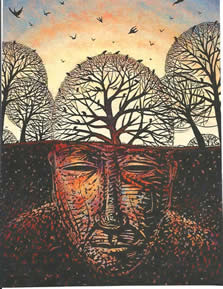What is Nature Play?
Open-ended and
free-form exploration and recreation in a “wild” area – be that a vacant lot, a
neighborhood park, or the woods at the edge of the backyard. For many of us,
this type of play defined our childhoods and became the root of our conservation
values as we grew.
Why
does it matter?
Unfortunately, kids today
don’t have the kind of experiences in nature that were once common place. As a
result, many suffer from a lack of connection to the environment, a syndrome
known as “nature deficit disorder.” Time spent in nature is
essential for children’s physical and mental health and cognitive and social
development. These are just a few of the well-documented reasons playing outside
is good for kids:
· Schools with environmental
education programs score higher on standardized tests in math, reading, writing,
and listening
Children are born with an innate sense of wonder and adventure.
To nurture this they need to experience the joy of frequent, unstructured play in nature.
In today’s busy, over scheduled lives, plugged-in society and fear of the
unknown, children seem to have fewer opportunities to run through a stream,
build shelters with sticks, hide in bushes or jump in a pile of leaves.
The Hudson Highlands Nature Museum is taking steps to ensure that the
children in our area can discover find adventure and develop the wonderment of
free nature play. Building upon the experiences from our nature based
preschool, the Young Naturalist Program, the Museum is creating Grasshopper
Grove, a safe, accessible nature play space where young children can run down
hills, balance on logs and boulders, use their imaginations and develop their
motor skills while playing in nature. We are proud to present this first
project of its kind in the Hudson Valley.
Grasshopper Grove Nature Play Area
Part trail, part nature play
space, part “wild” area, Grasshopper Grove brings the wonders of the woods and
fields up close. Grasshopper Grove provides a place where young children
can connect with nature in a safe, unstructured manner.
It is a half-acre of natural elements to
promote the value of nature play for children’s health and cognitive development
and provide a fun, safe, “bridge” between natural areas and wild areas that will
help both children and their parents feel increasingly comfortable in nature. It promotes the Museum’s mission to create caretakers of the natural world by
acting upon expert studies, which indicate that a child’s early experiences in
nature form the basis of lifelong environmental ethics.
Grasshopper Grove follows a design developed with museum staff, board,
parents and preschool students by one of the world’s leaders in this field, Adam
Bienenstock of Bienenstock Natural Playgrounds. Beginning with a half acre of
field surrounded by a rough stone wall and mature shag-bark hickory trees, the
area was graded to incorporate a low hill surrounded by a path, a dry stream-bed
and a higher hill where children have a view of the Museum’s fields and ponds.
Taking inspiration from the wild areas on the Museum’s 177-acre Outdoor
Discovery Center where its preschool children love to play, elements that have
been added to Grasshopper Grove include a “fallen” oak tree for climbing, large
boulders, and an area of “loose parts” for building such as pine cones, bark and
sticks. There 's water flowing down a
series of cedar troughs, an area of shrubs will grow into a maze of “secret
hide-outs” and a dirt pile will provide open-ended creative play.
Executive Director, Jacqueline Grant, is quick to point out that while two
initial grants enabled the project to get underway, generous donations of
materials and labor, and a willingness by contractors to provide services at
minimum rates made the scope of the project possible. The two grants came from
the Hudson River Valley Greenway for design consultation, and from a foundation
that wishes to remain anonymous. The Garden Club of Orange and Dutchess was
instrumental in first helping to select appropriate trees and shrubs and then
sponsoring their purchase and installation. They also planted 750 spring bulbs
and will design and install a “sensory” garden. Donations also came from
friends of the Museum both at the Museum’s annual fundraising event and through
sponsoring individual elements such as an Adirondack-style lean-to.
